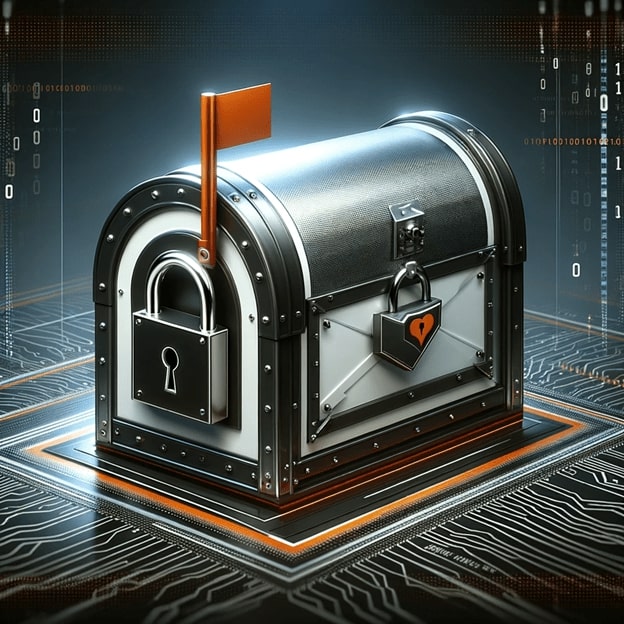In today's digital era, the importance of email security cannot be overstated. With the rise in cyber threats, understanding and implementing robust email security measures is crucial for both individuals and businesses.
The Essence of Email Security
Email security involves methodologies and techniques to safeguard email accounts and communications from unauthorized access, loss, or compromise. It ensures the confidentiality and integrity of sensitive information sent and received via email.
Understanding Email Phishing Protection
Phishing attacks, where attackers impersonate legitimate organizations to trick users, pose a significant threat. Secure Email Gateways (SEGs) are crucial in providing a barrier against such malicious or unwanted emails.
The Role of Email Encryption
Email encryption is essential for keeping content unreadable to anyone other than the intended recipient, especially in sensitive business communications.
Diverse Threats in Email Security
Types of Email Attacks
- Social Engineering: Manipulating individuals into divulging confidential information.
- Spear Phishing: Targeted phishing focusing on specific individuals with personalized emails.
- Ransomware and Malware: Software designed to encrypt files or damage systems.
- Spoofing and Man-in-the-Middle Attacks: Deceiving recipients by forging email headers or intercepting communications.
- Data Exfiltration and Denial of Service: Ranging from stealing sensitive data to overwhelming email servers.
- Account Takeover and Identity Theft: Unauthorized access for fraudulent purposes.
- Brand Impersonation: Deceiving recipients by impersonating well-known brands.
Dangers of Malicious Emails
- Compromise of Private Information: Hackers access sensitive data with a single click.
- Device Infection: Spreading malware, causing crashes, or data theft.
- Data Theft: Phishing sites capturing sensitive information.
- Organizational Risks: Infecting networks, stealing data, or disrupting operations.
Vigilance and education about these threats are crucial for robust email and data security.
Email Security Best Practices
In the realm of digital communication, email security stands as a critical bastion against cyber threats. Implementing effective security measures is not just a technical necessity but a strategic imperative. This section explores the essential practices to fortify email security.
Implementing a Strong DMARC Policy
Domain-based Message Authentication, Reporting, and Conformance (DMARC) is a powerful email validation system designed to detect and prevent email spoofing - a common tactic used in phishing and spam attacks. Implementing a strong DMARC policy involves several steps:
- Authentication Protocols: Begin by setting up SPF (Sender Policy Framework) and DKIM (DomainKeys Identified Mail). These protocols authenticate outgoing emails, ensuring they originate from your domain.
- Policy Configuration: Configure your DMARC policy to specify how email receivers should handle messages that fail DMARC checks. Options range from 'none' (monitoring mode) to 'quarantine' (treat as suspicious) to 'reject' (block entirely).
- Regular Monitoring and Adjustment: Monitor DMARC reports to track authentication failures and adjust your policy as needed. This ongoing process ensures continual adaptation to new threats.
- Educating Stakeholders: Educate everyone, from IT staff to end-users, about DMARC. Understanding its significance helps in smoother implementation and compliance.
Regular Awareness Training
Cybersecurity is as much about people as it is about technology. Regular awareness training is crucial in cultivating a security-conscious culture.
- Frequent Training Sessions: Conduct training sessions regularly to keep the team updated on the latest phishing tactics and social engineering scams.
- Engaging Content: Utilize interactive modules, real-life examples, and gamification to make learning engaging and memorable.
- Testing and Evaluation: Implement mock phishing exercises to test employees' knowledge and readiness. Feedback from these exercises can guide future training.
- Creating a Reporting Culture: Encourage employees to report suspicious emails. A proactive approach is key to preventing breaches.
A Layered Security Approach
A layered security approach involves multiple defensive strategies to protect email systems. This multi-faceted defense mechanism ensures that even if one layer is breached, others stand to protect.
- Advanced Threat Protection (ATP): Utilize ATP solutions to defend against sophisticated attacks like ransomware, zero-day threats, and unknown malware.
- Endpoint Security: Ensure all devices accessing the email system are secured with antivirus software, firewalls, and intrusion prevention systems.
- Encryption: Encrypt sensitive emails to protect data integrity and confidentiality, both in transit and at rest.
- Regular Software Updates: Keep all systems and security software updated to defend against the latest vulnerabilities.
- Incident Response Plan: Have a well-defined incident response plan to quickly address and mitigate any breaches that occur.
Implementing these best practices in email security is not a one-time effort but an ongoing commitment to digital safety and operational integrity. By embracing a strong DMARC policy, regular awareness training, and a layered security approach, organizations can significantly enhance their defenses against the ever-evolving landscape of cyber threats.
Cloud Email Security: The New Frontier
Cloud email security is essential for modern businesses, offering flexibility, scalability, and robust protection against cloud-based threats.
How Secure Exchanges Can Help
Secure Exchanges provides solutions to enhance email security, especially for sensitive information handling. Key features include:
- Digital Signatures: More secure than traditional e-signatures.
- Bidirectional Secure Communication: Protection during transfer and in the recipient's inbox.
- Large Encrypted File Transfers: Send and receive oversized email attachments up to 25GB.
- Automatic Email Deletion: Control over the visibility and lifespan of sent emails.
- Read Confirmation: Tracking email and attachment access.
- Multi-Platform Integration: Seamless integration with Gmail, Outlook, and other email service providers.
- White Label Solutions: Enhancing brand integrity with secure transfer experiences.
These solutions integrate with platforms like Microsoft Outlook and Gmail, emphasizing user-friendliness and patented security technology.
Final Thoughts
Email security is a multifaceted and evolving challenge. Staying informed and vigilant is key to safeguarding email communications against a diverse range of threats. Secure Exchanges offers a holistic approach to email security, addressing various needs from secure data transfer to digital signatures, ensuring convenience and brand integrity.


